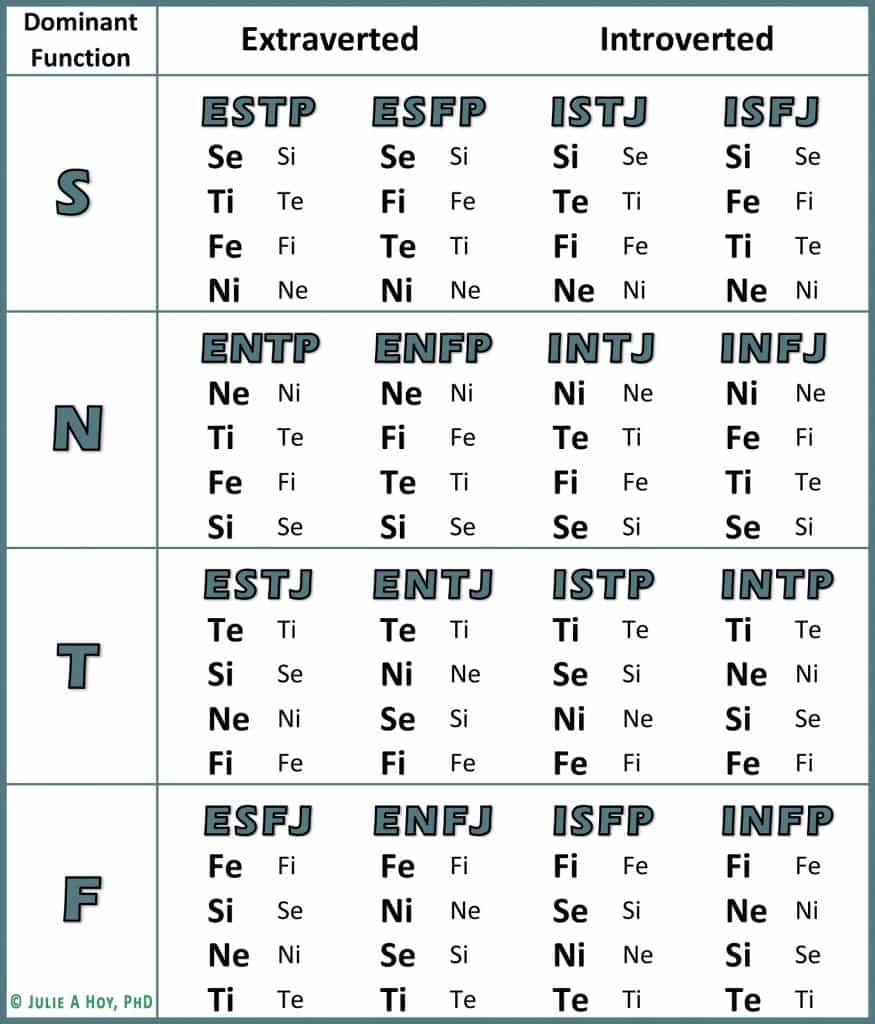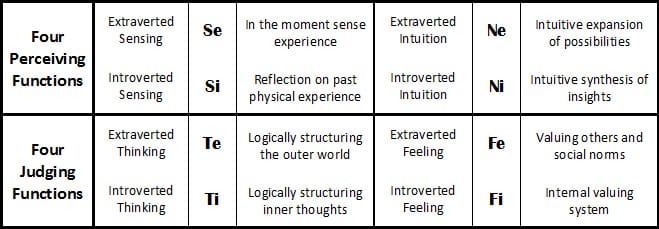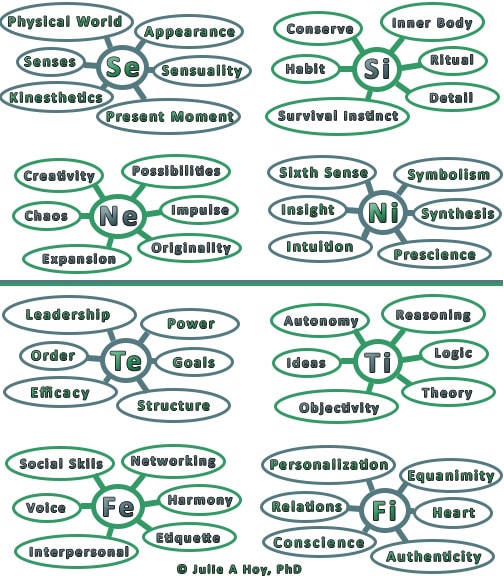In 1995, Anglelo Spoto, a Licensed Mental Health Counselor, published a book entitled Jung’s Typology in Perspective (first edition, 1988). He talked about a phenomenon he called “typological frenzy,” referring to the immense popularity and dissemination of systems based on Jung’s Psychology of Types (most notably MBTI), even though that comprised just one portion of Jung’s vast works. Spoto predicted that this frenzy would die down, but I would say that in the subsequent two decades, it has only fomented further.
Spoto proposed a reason for the “excesses” of fascination and admiration Typology so frequently induces in people, a reason I wholeheartedly agree with. As he says, it is an underlying component of human nature (archetype) to “know yourself,” and search for “form, proportions, clarity, and harmony.” Jung’s Typology taps directly into the human need for order and self-understanding. As long as one does not take this too far and insist that everything must fit into the ordered model of Jungian Typology, I enthusiastically join the frenzy to make use of Typology as a guiding life principle.
Carl G. Jung’s theory of Psychological Types centers on his empirical observation of patterns in human behavior. He defined four basic cognitive capacities, or Functions, of the human brain. An introduction to the Language of Functions is provided for you below.
The Four Basic Cognitive Functions
Jung called two of the Functions Perceiving Functions and the other two Judging Functions. Perceiving is taking information in, while Judging is valuing the information and deciding what to do with it. The two Perceiving functions are Sensing and Intuition, while the two Judging functions are Thinking and Feeling.
Attitude (direction) of the Cognitive Functions
Jung also observed that all four Functions could be directed in two different ways, either outwardly into the world (Extraverted) or inwardly toward the internal world (Introverted). This leads to the total of 8 Functions that are outlined briefly in the table below. People tend to make use of both Extraverted and Introverted Functions, which is why so many people feel that they are so called “ambiverts.” In reality, they are using Functions that differ in Attitude in different areas of their lives.
Each Function has its own, well, function, in your brain. It either directs a way of Perceiving information or Judging it. It is either concerned with the outside world, or with your inner world (ie, Extraverted or Introverted).
An optimal, fully functional person would be able to consciously use all 8 functions as needed, though most of us feel good if we can get a handle on a couple of them! This is the essence of my work, helping you to understand your functions and become fluid in their use.
The figure below illustrates the breakdown of Jung’s Functions.
Listen to an audio describing the Cognitive Functions:
The Function Family
A Function Family describes the order and direction in which you prefer to use your four Functions. Since there are four base Functions (S, N, T, F), there are four slots in the Function Family that generally order your preferred Functions in decreasing ease of usage, differentiation, and conscious control.
Jung explained that everyone has a preferred Function among the eight that acts as their Dominant Function. You use and develop this function your whole life and it predominates your personality. You have the other 7 functions, but they are more unconscious and therefore less accessible to you. They tend to pop up into your conscious life unexpectedly and perhaps immaturely. The process of self-development, or individuation, requires bringing these other functions up from the unconscious into your conscious awareness, learning about them and practicing using them, until you can wield them fluidly in your life.
In our youth, we typically begin to develop our second function, termed Auxiliary as it serves to assist and balance out the Dominant. If your Dominant Function is Introverted, your Auxiliary Function will likely be Extraverted for balance. And if your Dominant Function is one of the Perceiving functions (S or N), then your Auxiliary Function will be Judging (T or F), also for balance.
The remaining Perceiving Function and Judging Function will fill the third (Tertiary Function) and fourth (Inferior Function) slots of your Function Family, but in the opposite order of the first two. So if your first and second functions are Judging and Perceiving respectively, the third and fourth will be Perceiving and Judging respectively . The third will have the opposite Attitude of the second, and the fourth will have the opposite Attitude of the first. Together, these four Functions compose the Principle Functions of your Function Family.
The remaining four Functions sort of shadow the first four (as I interpret them). Only I don’t want to call them Shadow Functions as that has a rather intimidating, lurky sound to it, and I want these four Functions to be welcomed into our Function Family. I will refer to them as Background Functions.
The MB types are a convenient shortcut to getting at your Function Family, as shown in this figure.

The Function Families for each Myers Briggs Type. The four Principle Functions are listed in the first column, with the Background Functions listed to their right. The Function Family that goes with your Type, will be the basis for your Function Flow.
Okay… you found your Function Family using the MB shortcut… but what does it mean? Here are some more characteristics of each of the eight functions to help you get better acquainted with them.
The specific order and preference with which you use these functions affects every aspect of your life — your personality, behavior, reactions, strengths, weakness, relationships. I have developed the Function Flow method to make practical use of this information in almost any area of your life.
Contact me now to schedule your Type Consultation to learn how this information can help you function at your best!



